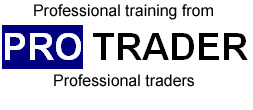Certainly in my experience one of the major reasons traders fail is over trading or if you prefer trading with insufficient capital.
You can overtrade whether you have $1,000 in your account or $1,000,000 in the account as overtrading is really about trading with insufficient capital relative to the size of the positions and risk that you are taking on. So hedge funds are just as capable or overtrading as you and I. Long Term Capital Management is a classic example of a massive fund still being under capitalised and hence overtrading.
In systematic trading of emini futures contracts it is essential to establish a “stop trading” point in advance of commencing to trade the strategy. This is most commonly set as a maximum level of losses that you are prepared to suffer before temporarily or indeed permanently pulling the plug on the system. Often this will be based on maximum historical drawdown but it can be based on other factors such as falling average trade, increasing percentage or runs of losing trades etc.
Generally maximum drawdown is as good a place to start as we are in this business to make money, not lose it. For normal trading the capital you allocate to a particular trading system, under such circumstances, should be based on a multiple of maximum historical drawdown. Perhaps double or even treble maximum historical drawdown.
Often traders will either not know their maximum drawdown (or even attempt come up with a manual back test estimate) or trade with a percentage of that figure (say 50%) rather than a multiple. They will then be apparently surprised when they hit a perfectly normal and predictable drawdown and run out of trading capital. Often just after they have been forced to stop trading the system will then turn around and start making profits again. Newbie traders will groan and mutter about the fickleness of the market (as they often do when individual trade stops are hit and then the market immediately reverses off them) but of course the truth is that they have not allocated sufficient capital and they have been “bounced out of the markets” by what is nothing more than an entirely predictable and easily forecast dip in the equity curve. Tight individual trade stops rarely work in trading and tight capital allocations often suffer from a similar fate on the larger scale.
It is therefore essential to understand the characteristics of the systems you are trading and the likely swings in the equity curve that you will encounter. Then allocate capital accordingly rather than either having no idea of what you might experience in terms of drawdowns or simply saying “well I will give this system and arbitrary $2,000”. Although I am bound to say even that is better than starting to trade with no idea of where you will stop trading if things begin to go wrong !
Trading is as much about understanding and working with the vagaries of the equity curve as it is about selecting entry and exit points.
Professional traders often derive their equity allocations in reverse. They know what their average expected yearly drawdown is. If they want to keep that figure to say 25% of capital they can then derive the capital allocation by working backwards from those two figures. Ie if average annual drawdown is $5,000 and you are seeking to limit drawdown to 25% of the account balance then the capital allocation should be $20,000.
Another way to calculate capital allocations is to input actual historical results into a Monti Carlo simulator and run a series (maybe 10,000) simulations to derive anticipated drawdown levels and expected probabilities and confidence limits for each of those levels.
Included in the Protrader emini course is a simple simulator for carrying out this type of testing plus a trade randomiser for viewing the results.

